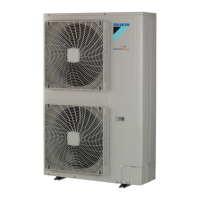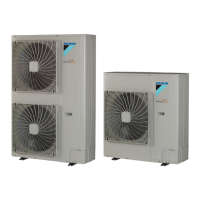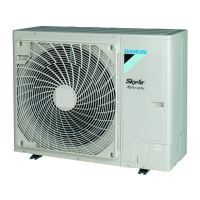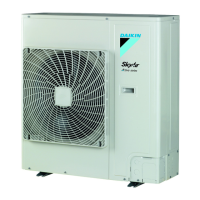Troubleshooting ESIE02–01
3–4 Part 3 – Troubleshooting
3
1
3
4
5
1.2 Overview of General Problems
Introduction The general problems are:
■ None of the indoor units operates
■ Equipment operates but stops sometimes
■ Some indoor units do not operate (twin / triple)
■ Equipment operates but is not able to cool
■ Abnormal operating noise and vibrations
■ Equipment does not operate (operation light OFF)
■ Poor cooling or heating
■ Operation stops suddenly (operation light flashes)
■ Abnormal functioning.
None of the indoor
units operates
To troubleshoot, check the following:
■ Make sure the rated voltage is supplied.
■ Make sure the indoor unit type is compatible with the outdoor unit.
■ Troubleshoot with the indoor unit LEDs. See page 3–11.
■ Troubleshoot with the outdoor unit LEDs. See page 3–12 and 3–13.
■ Make sure the address for the remote control and indoor unit are set correctly. See page 4–5.
Equipment
operates but stops
sometimes
To troubleshoot, check the following:
■ A power failure of 2 to 10 sine wave cycles can stop air conditioner operation.
■ Cooling operation cannot be used when the outside temperature is below 0˚C.
■ Troubleshoot with the indoor unit LEDs. See page 3–11.
■ Troubleshoot with the outdoor unit LEDs. See page 3–12 and 3–13.
Some indoor units
do not operate
(twin / triple)
To troubleshoot, check the following:
■ Make sure the indoor unit type is compatible with the outdoor unit.
■ Troubleshoot with the indoor unit LEDs. See page 3–11.
■ Troubleshoot with the outdoor unit LEDs. See page 3–12 and 3–13.
Equipment
operates but is not
able to cool
To troubleshoot, check the following:
■ Make sure the thermistor has not disconnected from the pipe holder.
■ Troubleshoot with the indoor unit LEDs. See page 3–11.
■ Troubleshoot with the outdoor unit LEDs. See page 3–12 and 3–13.
■ Check for gas shortage. See page 3–54.
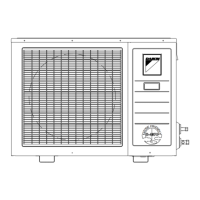
